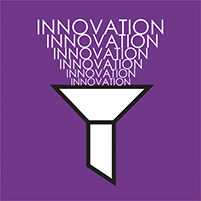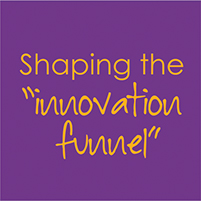According to Guy Jelley, CEO of Post Vision Technology , many businesses struggle with being able to encourage free thinking and idea generation while at the same time ensuring the execution of these new ideas is completed with the necessary governance.
“Most businesses have some form of ‘innovation funnel’,” he explains. “The funnel should be wide at the front to capture as many potential ideas or ‘proposed projects’ as possible and narrows to the select few that are actually carried out within the ‘active portfolio’, as ideas become projects that progress through each stage of the project management process.
“It is important that a company’s entire portfolio aligns to its strategy and that strategic planning helps channel projects into the portfolio. This, however, can be restrictive to innovative thinking, so how do you ensure that you not only have a constant stream of new ideas but that these innovations are not strangled by bureaucratic red tape?”
Jelley believes that there are several steps an organisation can take to enable this process. Firstly, innovations must be allowed to flow into the project process through the employment of idea-generating processes and incentives. “Each and every employee within an organisation – regardless of their capacity or level – should be allowed to bring ideas to the table. You’ll often find that even the smallest of ideas can have the greatest of impacts.”
In order to encourage this process, he recommends the creation of a simple mechanism for the registration of a potential idea.
“This could be in the disguise of a straightforward form that is completed and submitted. At this stage, it is important to note that the correct information must be gathered in order to ascertain whether an idea is viable or not right from the start.”
Facts that should be covered include:
- what the problem is;
- what the desired outcome would be;
- who would be impacted by this project; and
- who would benefit from it.
“Attaining this type of high level information upfront will allow those governing the innovation funnel a better understanding of the idea and what its planned benefits are,” Jelley explains.
Next, a process to ensure that ideas are assessed on a timely, ongoing basis must be introduced. “The best way to guarantee that this is carried through is to assign the responsibility to a forum of managers or executives from various departments and divisions, who will be able to consider each idea forwarded from a channel, customer, product and regulatory perspective. Potential risks, benefits, resource requirements (both in terms of costs and people), and the impact on people and processes must all be ascertained and addressed.”
By analysing the information received and estimations made, the forum then decides which ideas will be activated, which will be scrapped and which will be put on hold.
Essentially, a process that will enable the forum to make their assessments and estimations and then revisit the project at each stage of the project management process must be established. This means that each project is reassessed based on performance, and the forum is constantly aware of whether a particular project is delivering what was planned.”
Even once a project reaches the closure stage, it must be measured against the initial calculations in order to aid in future planning and to improve the accuracy of estimates moving forward.
Furthermore, an idea can only be activated as a project once the forum understands which other projects already fall within the active portfolio. Here they should also look at how much more risk can be taken on, where the issues are and resource availability.
“Essentially, the key to managing the innovation funnel is to allow for the free flow of ideas but to back this with a rigorous project management process once the go ahead is given on a project. It is only through this approach that businesses will be able to increase not only the number of ideas generated but also their successful execution,” he concludes.



